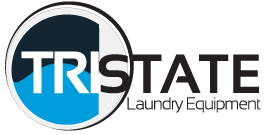In October, we shared an update on a
laundry equipment removal project we’d been working on with RW Martin & Sons, Inc. out of Kent, Ohio. That project, which was in Brockton, Massachusetts, led to another large hospital project, which was in Los Angeles, California. Our company may be called
Tri-State, meaning we are in Virginia, North Carolina, and South Carolina, but believe me, we are all over the place these days.
This was a big job, done in several phases. During the first phase of laundry equipment removal, Tri-State staff tore everything out of the facility – Milnor tunnel washers, dryers with shuttle systems, and so on. This was a large facility with a lot of big commercial laundry equipment. In about 6 weeks, we got it down to bare bones. After the tradesmen got the new electrical, plumbing, and such completed, Tri-State went back to receive the equipment on the docks, stage the equipment, and then complete the installation. In about 3 weeks, we installed a large Milnor tunnel washer, dryers, a conveyor system – everything you would need to make a facility like this run smoothly and efficiently.
I must stop here because I’m making it sound way easier than it was. This facility was going from a steam powered production plant to a plant running without steam, now using two
Parker Boiler T6800s to heat their wash, no steam up needed. This required assistance from our friends,
Gulf Steam Company out of Florida, to get the plant running.
In all, we spent about 9 weeks making these changes, and I have to say that I couldn’t be more pleased with the results. Check out the photos to see for yourself. I couldn’t be prouder to be a part of an organization that gets to upgrade the equipment for some of the finest healthcare facilities in our country.








